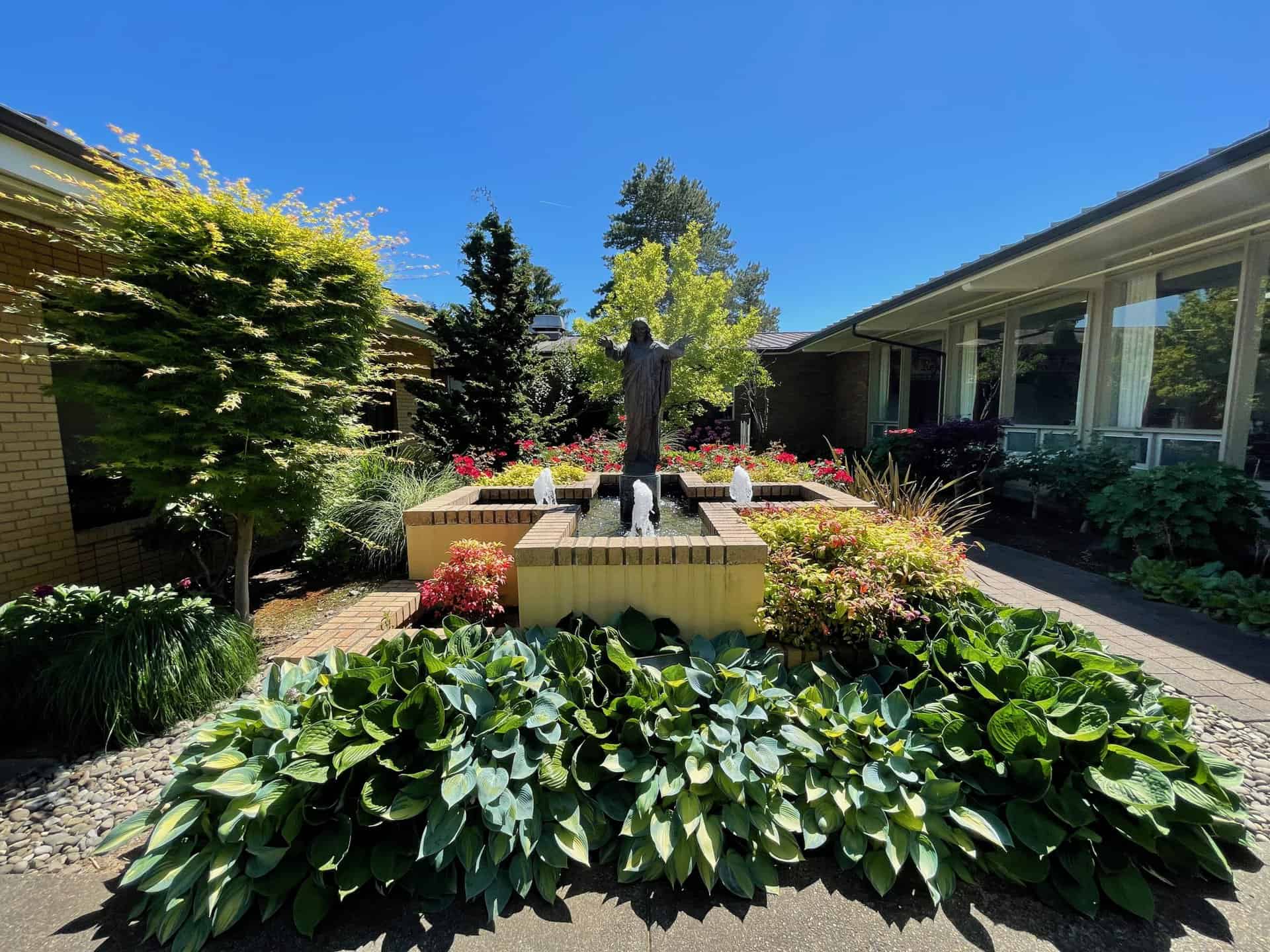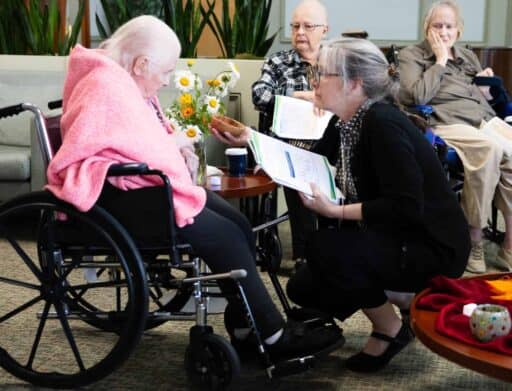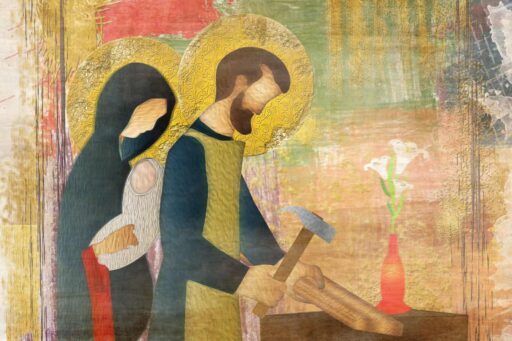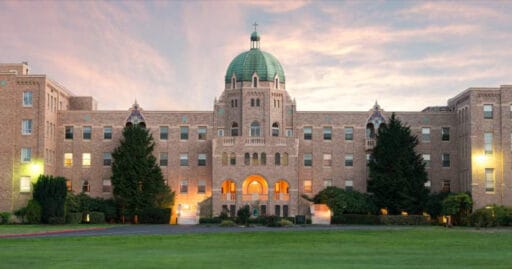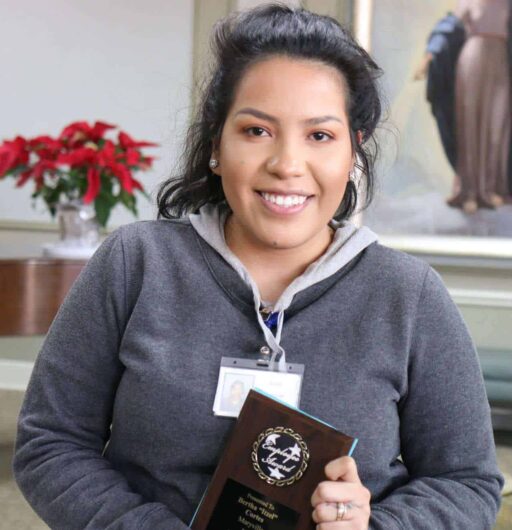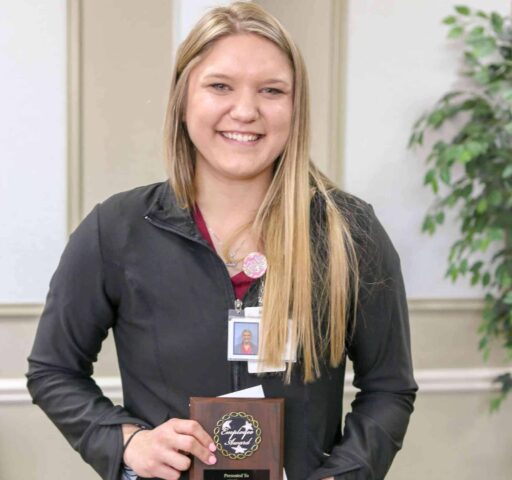As we celebrate the 60th anniversary of Maryville, there is a lot to admire since the Sisters of St. Mary of Oregon established Maryville in 1963. If you want to open a specialized nursing care facility today, you can start by searching online for “how to start a nursing home” and dozens of websites will provide some directions. However, the descriptions in the first sentence of these websites warn that opening a nursing home is a difficult undertaking, challenging, and no easy feat.
There are dozens of logistics to navigate, such as construction and operating costs, staffing, and state and federal regulations to name just a few. Yet, the need for safe and reliable health care for the sick and elderly within the community is just as present today as it was in the 1950s. It was in the 1950s, the Sisters of St. Mary of Oregon saw the need and started to valiantly write their own instruction manual for starting a nursing care center.
The challenges then were no less daunting than they are today. Sister Theresa Margaret Yettick, the General Secretary of the Sisters’ Community at that time, led efforts to obtain a government grant and borrow the additional funds needed to build a nursing home on the property. At the Motherhouse all the Sisters supported Maryville in different ways. Some of the Sisters cleaned the building, put the beds together, arranged the furniture and worked to obtain the supplies needed to care for people. Other Sisters jumped right in to learning how to provide care for the residents.
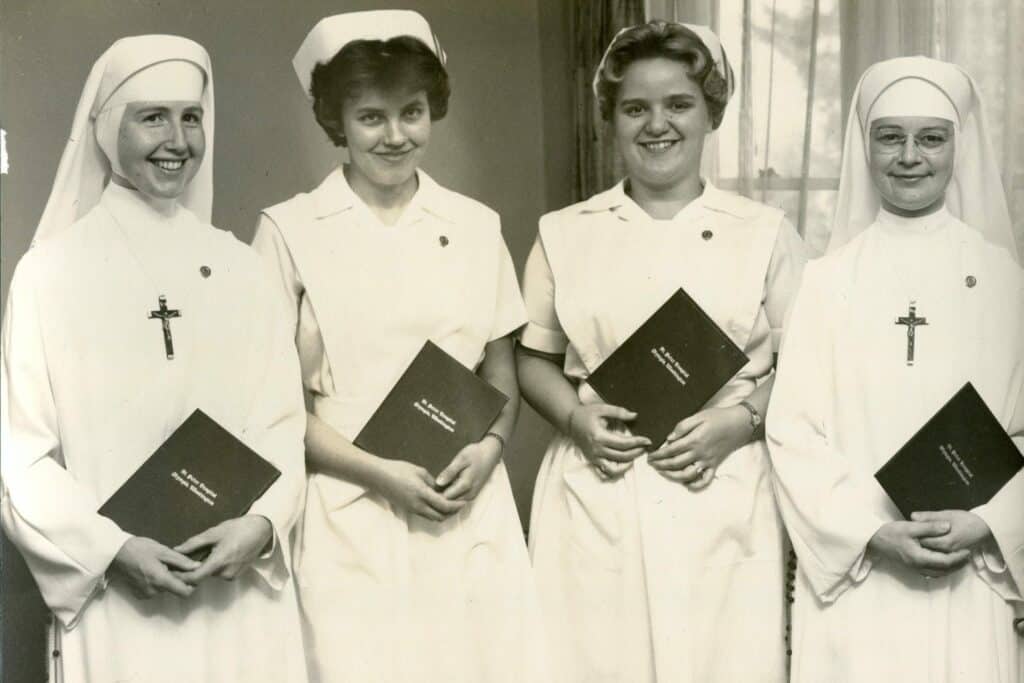
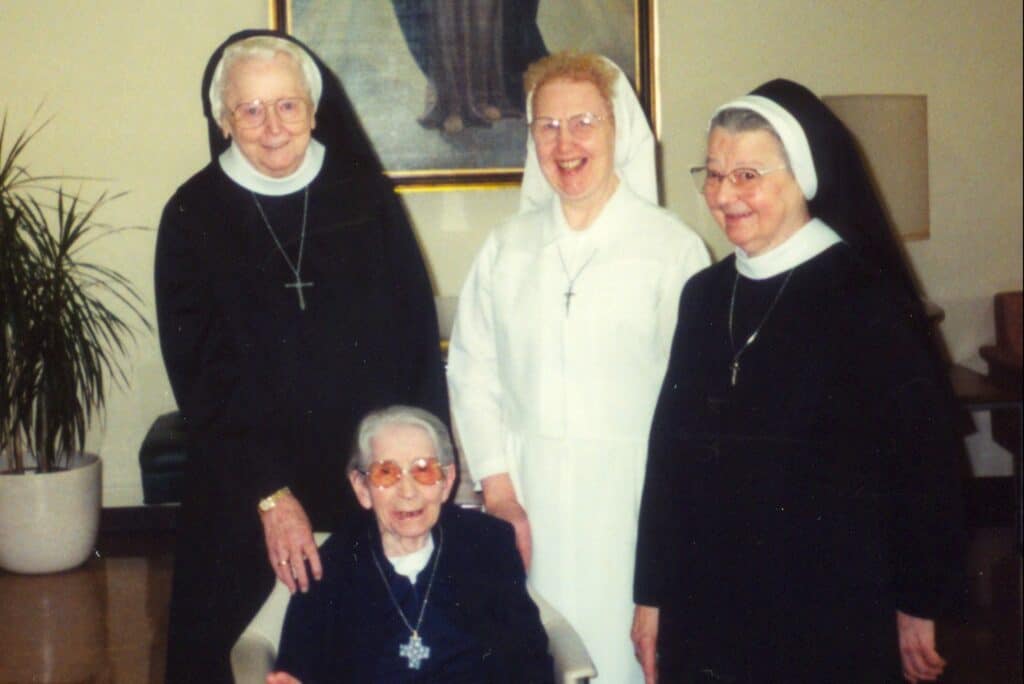
For example, Sister Theresa Ann Bunker transitioned into nursing as Maryville opened. She became a registered nurse and served more than 40 years at Maryville. “I’m very passionate about taking care of the ill and elderly and just being with them, trying to lessen their pain, their anxieties,” she said reflecting on her career.
Sister Josephine Pelster was first introduced to Maryville as a high school student and joined the Sisters after she graduated in 1965. In the early years of Maryville, to fill the staffing needs many of the Sisters would take on the dual responsibilities of education and health care. She recalled stories of Sisters returning from the classroom and pulling into the parking lot being told, “You’re on night shift tonight.” By 1968, she was a nurse’s aide and working on her nursing degree at Ashland Southern, (now Southern Oregon University).
As Sr. Josephine recalled the changes through the years, she remembered some of the differences in everyday life. “The meals were served restaurant style in the dining room with beverages first, followed by salads and main dish and there was even a dining room host,” she said. Before the chapel, there was a portable altar. “In the 1970s, 14 Sisters lived in a space built as a convent where the Memory Care wing currently exists,” Sr. Josephine added.
When considering the most significant changes since its opening, there have been many updates from automatic doors and electrical systems, to Maryville Memory Care.
Kathleen Parry, President of Maryville since 2004, has seen the evolution of Maryville and the health care industry. Though not as prominent as a building, digital record keeping is one of the most significant improvements at Maryville she has seen.
“Originally all the paper charts were in large three ring binders. You had to pull them off a shelf, write your notes and then return them back to the case. Worse, if somebody wanted it at the same time, someone just had to wait,” said Kathleen. “The change streamlined our work and consolidated communications between doctors and practitioners improving the care we provide,” she added.
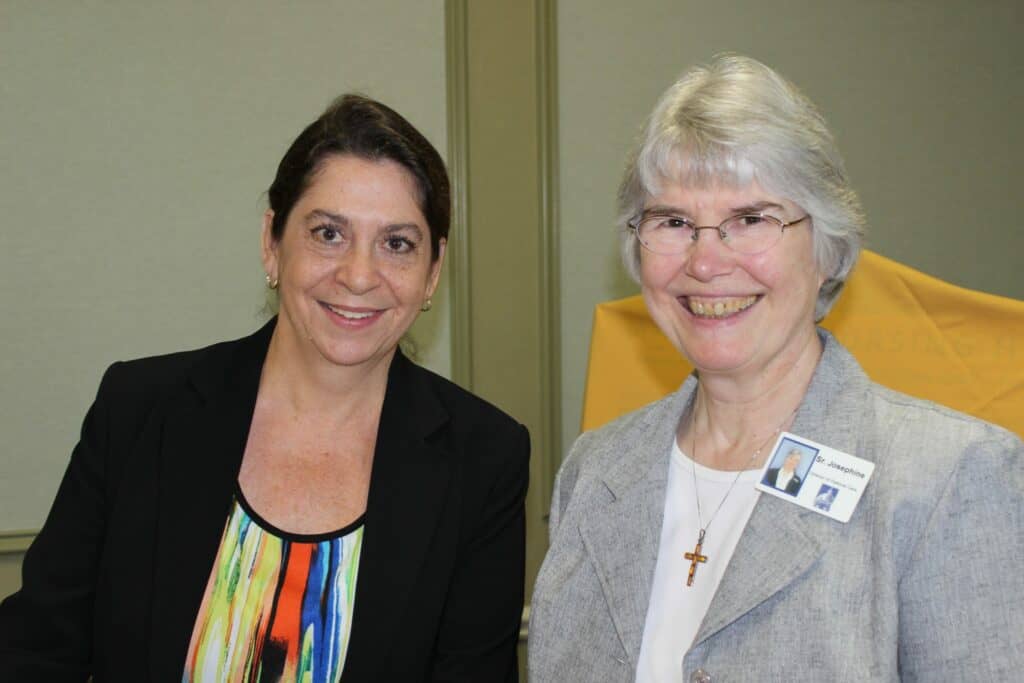
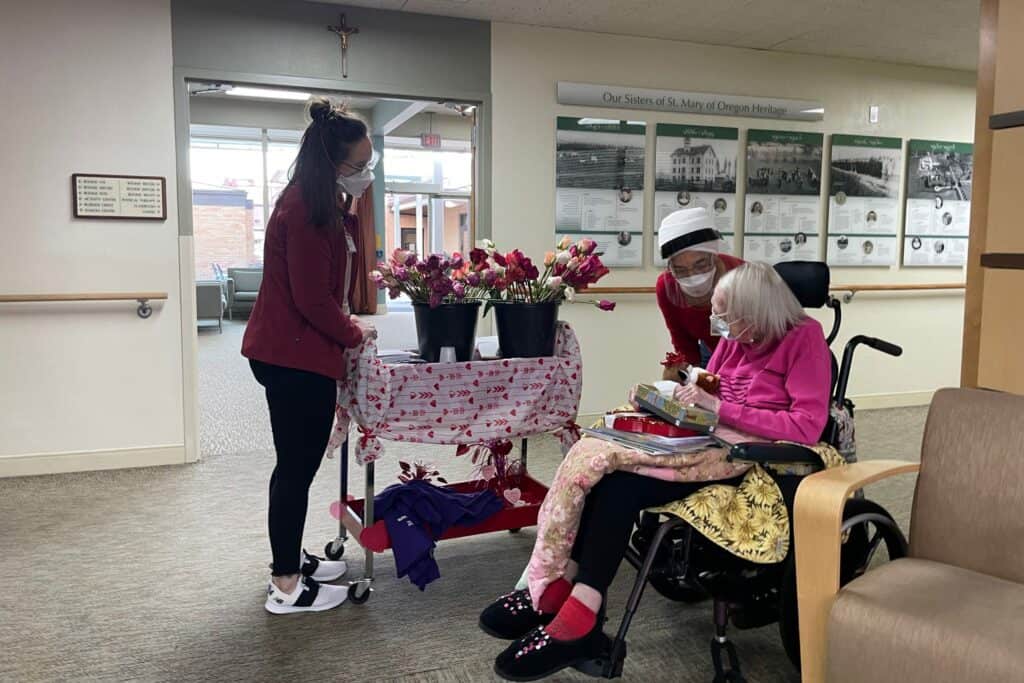
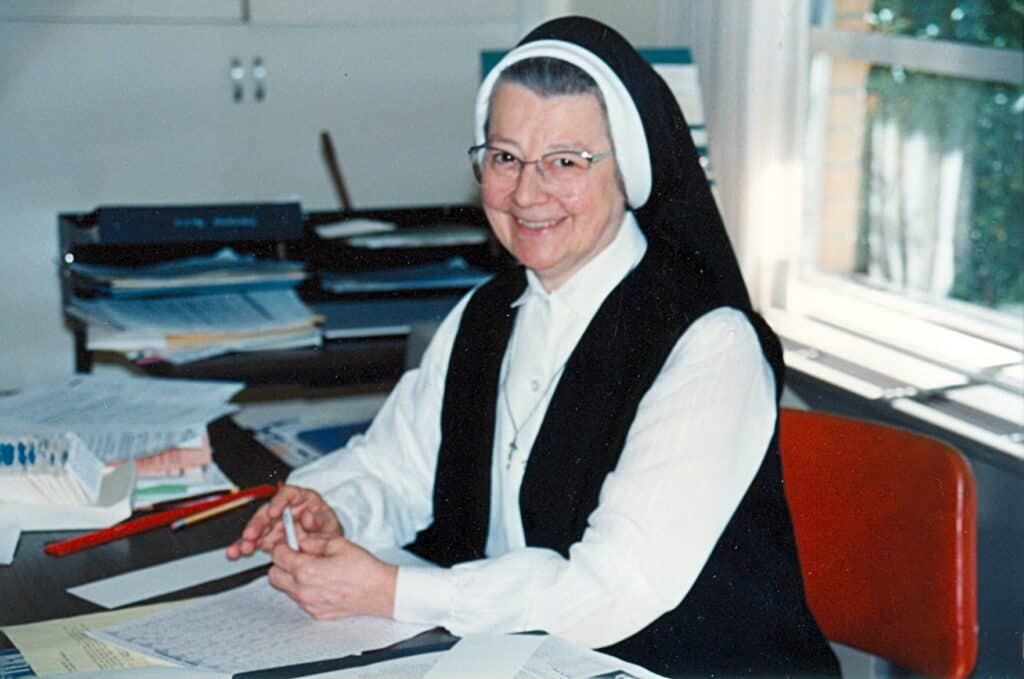
A significant difference between Maryville today and its beginning is the number of medical personnel on the premises and the type of specialty care they provide. The specialists who are available today include speech therapists, occupational therapists, physical therapists, with a team between 20 to 25 people. Every day there is a physician, physician assistant or nurse practitioner making the rounds. This level of personnel is not unique to Maryville, it reflects how the industry, and Maryville, have evolved through the years.
When Kathleen considers how Maryville has adapted through the years she says, “What I find amazing is that the Sisters identified a need and jumped into an area that was completely foreign to them. I am impressed by their courage. They instilled a ‘Service with Love’ and adaptability mindset. That foundation has been especially important to us the past couple of years.”
“The pandemic was challenging for us all but we did not see declines in our residents medically or spiritually, which is phenomenal and a testament to our caring team,” said Kathleen.
Maryville has also reshaped how its care practice is put into effect. In the early nursing days, the care was, “in a sense, rigid,” said Sr. Josephine. Today Maryville practices resident-centered care. This means multiple factors are reviewed when residents are admitted, for example, the time are they used to getting up in the morning.
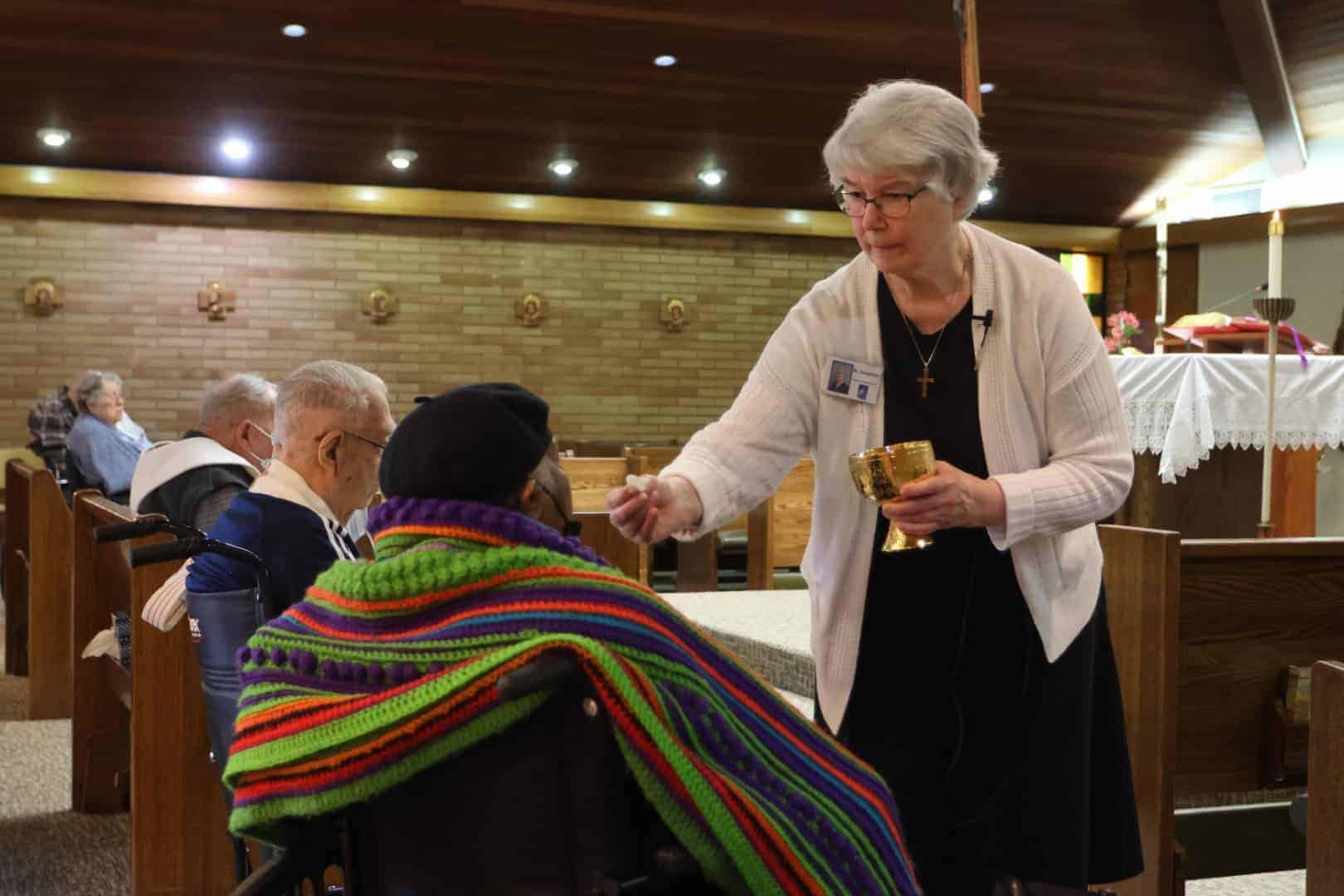
This shift for Sister Josephine parallels her own experience. After 30 years of being a nurse she retired and entered the ministry of chaplaincy. Today she is the Director of Pastoral Care at Maryville. “I know I am more compassionate today and really try to hear the underlying connection between residents and Maryville,” she says. “As the residents have played a larger role in their own care and community, it has furthered the connection of the relationship between Maryville, its residents and community.”
This is demonstrated by the hundreds of community donors and volunteers who have supported Maryville through the years. While the building of the Shalom Center or Maryville Memory Care have a physical imprint, it is the personal engagement that fills the emotional foundation for the staff and residents.
As the restrictions due to COVID-19 have eased, the pre-pandemic activities are renewing. This is evident all across Maryville particularly for outside visitors, including volunteers.
Suzanne Burns is the Volunteer Coordinator who has been leading these efforts for 18 years. In recounting her path to Maryville, Suzanne said, “I was at Mass at St. John Fisher and there was a notice in the bulletin. I had recently retired from teaching in Beaverton. I have always worked with kids but was not sure I could do this. I went home hesitant and I shared this with my husband. He said, ‘Go look in the mirror,’ and so I applied.”
After three years of restrictions, Suzanne shared an exchange, “I recently saw one of my former volunteers here at Mass. Afterwards we caught up and she said to me, ‘Suzanne, you have no idea how good it feels to me to be here.’ That is exactly it, the feeling we get being part of Maryville,” concluded Suzanne.
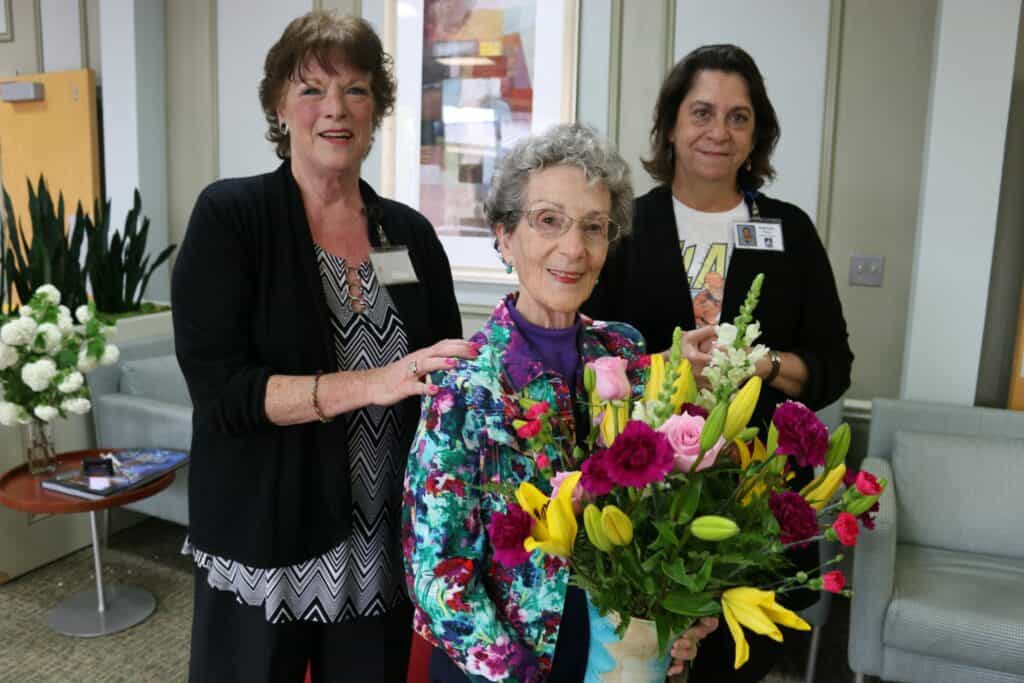
As Maryville celebrates its 60th year, we recognize the original Sisters for their faithful dedication to answer the call to care for the sick and elderly. We also recognize the continued dedication from the Sisters of St. Mary of Oregon, along with the generations of staff, volunteers, families and residents who have supported its growth and shaped the facility to continue to valiantly serve with love.

